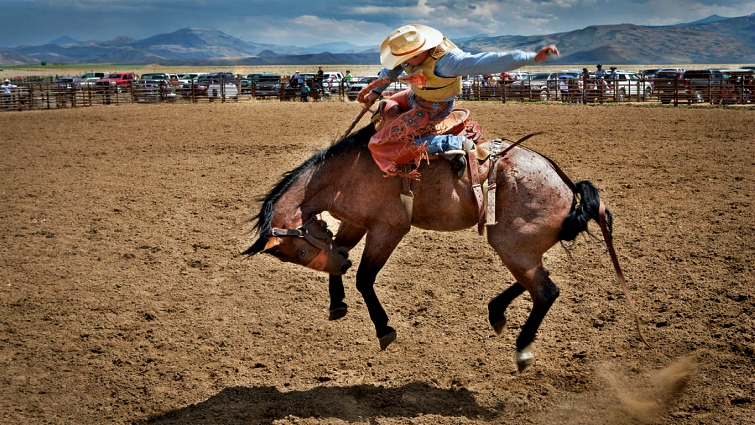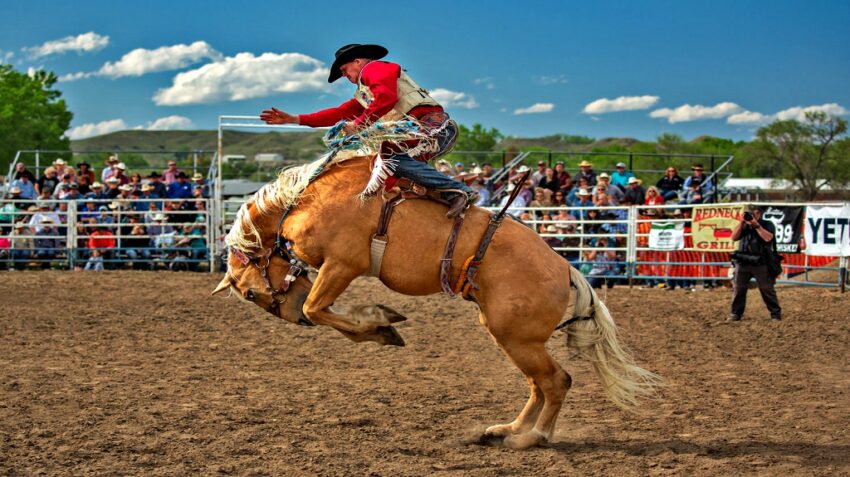Every equestrian has dealt at least one with plunging and bucking horses. For non-horse people who may not know what bucking is, we are giving a definition of the word ‘buck’. It is related to a distinct kind of misbehavior in which the horse sets both feet on the ground, and then immediately throws its hind end upwards. Many horses never try to buck when they are being ridden, and so never learn they can. While other horses, who are more “tickly,” may buck once or twice when they are first saddled and ridden (mainly if their trainer has jumped their early preparation so they’re not really prepared for transitioning to a rider).Bucking is a dangerous habit that should be halted as quickly as possible.



Some horses that do buck in training give it up after they find it doesn’t gain anything, and they’ve become habituated to the saddle. If, however, the horse ever drops his rider during this early training phase, he may learn that bucking puts him in control, over the rider—and so he continues using it as a dishonest tactic. Some horses buck spontaneously and without thinking whenever they’re surprised or annoyed but bucking may also be a horse’s reaction to discomfort or tenderness from ill-fitting tack. Tangled signals or complex cues from you, the rider, can also sometimes bring it on. Today we are going to tell you 5 of the most important reasons horse bucks and how to stop it from happening.



1.Make sure the Horse’s Environment is the right one
A difference in the volume of time your horse spends in its pasture and stall can cause behavioral obstacles. Maybe the amount of time your horse passes outdoors has changed and if he is accustomed to being outside most of the time, and it is now being stabled more than it is used to, it may be spending pent-up energy while being ridden. Increasing turn out time will give your horse the opportunity to exercise by himself.



2.Choose carefully what you are feeding to your horse
Most of the people like to feed to their horses “treats,” and some horses may get more concentrates than they really need. Your horse may be “feeling his oats” with more fuel than needed. Most horses, ridden once or twice a week only require fresh pasture or high-quality hay to be healthy. The extra feed that you give to them may mean more energy than it needs for light work. Only horses that work nearly every day might need extra food unless they have trouble keeping weight on even when they aren’t being ridden.



3.Check your horses’ health regularly.
Have your horse’s teeth checked and consider having it fixed by a chiropractor. Some horses trespass under saddle because of body pain. You may not know but even hoof or back pain may be a reason your horse is acting out.



4.Make sure to buy the Right Equipment.
Poor saddle fit can cause your horse to misbehave in many various ways and is often neglected. If your saddle is pressing or accumulating pressure in one area, your horse’s back can become very sensitive and cause it to buck. Be as picky about fitting your horse’s saddle as you would buying yourself new clothes. Saddles aren’t one-size-fits-all. It is best if you buy a saddle after you have bought the horse. Get the help of a good saddle fitter and don’t depend on saddle pads to fix a poorly fitting saddle. Your horse could be complaining about having the saddle girth overstretched. You should be able to push your hand between the cinch or girth and the horse’s body. Over tightening can cause cramping and chaff both in the saddle and cinch areas.



5.You must learn how to properly ride your horse.
It may be shocking for many horse owners to find out that horses don’t actually like being ridden or driven. Much of horsemanship is influencing your horse to do things voluntarily that it sees no earthly reason to do. Some horses figure out very quickly just how experienced and skillful the rider upon its back is. Just like us, they can become very proficient at avoiding work they don’t like. If your concepts are confused, you aren’t able to read the horse’s ideas and don’t know how to control unwanted behavior many horses will pick this up. When a horse bucks, it probably gives some signals previously. It is up to you to learn how to identify these signals and take actions before the bucking actually begins. This is where a good trainer can help you improve your skills. However, the answer to most behavioral problems under saddle is to increase the skill and knowledge of the rider.



